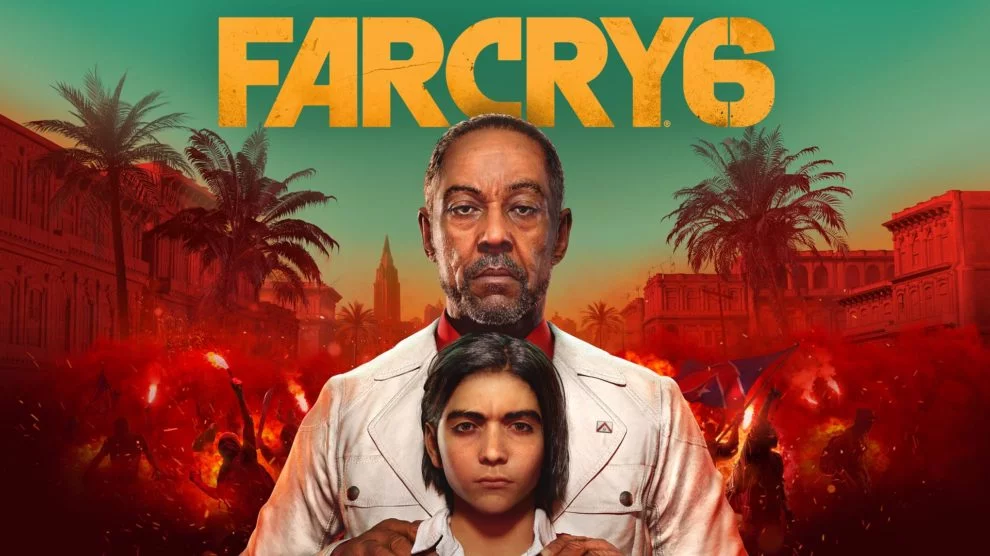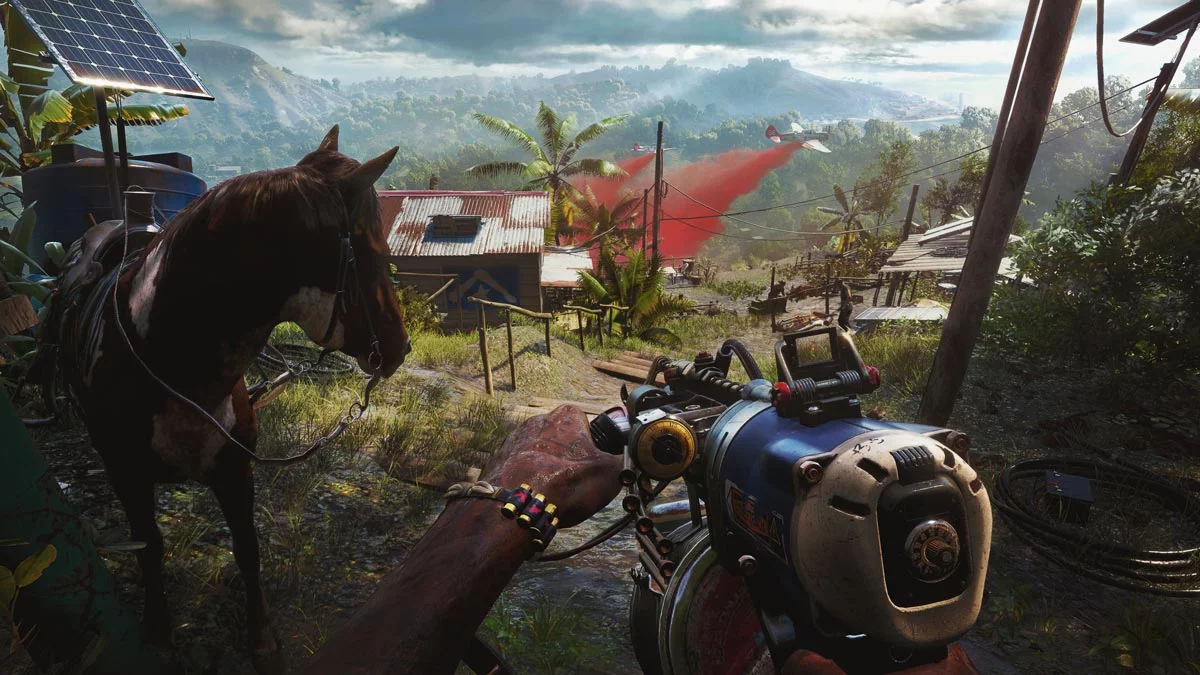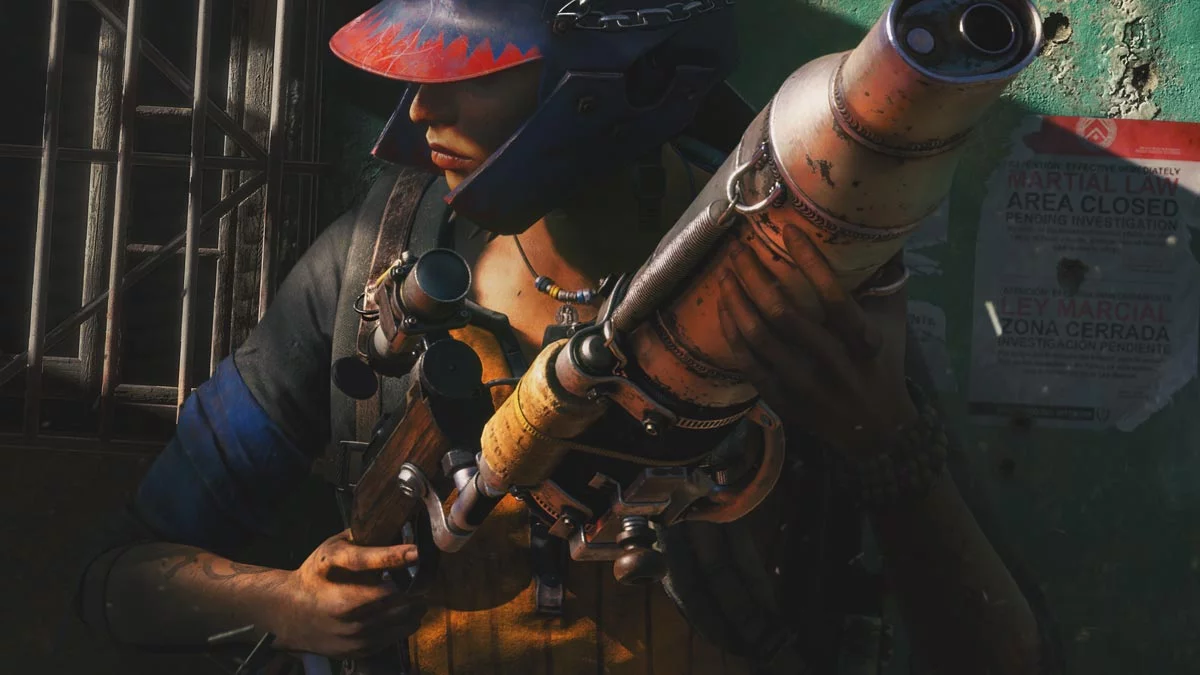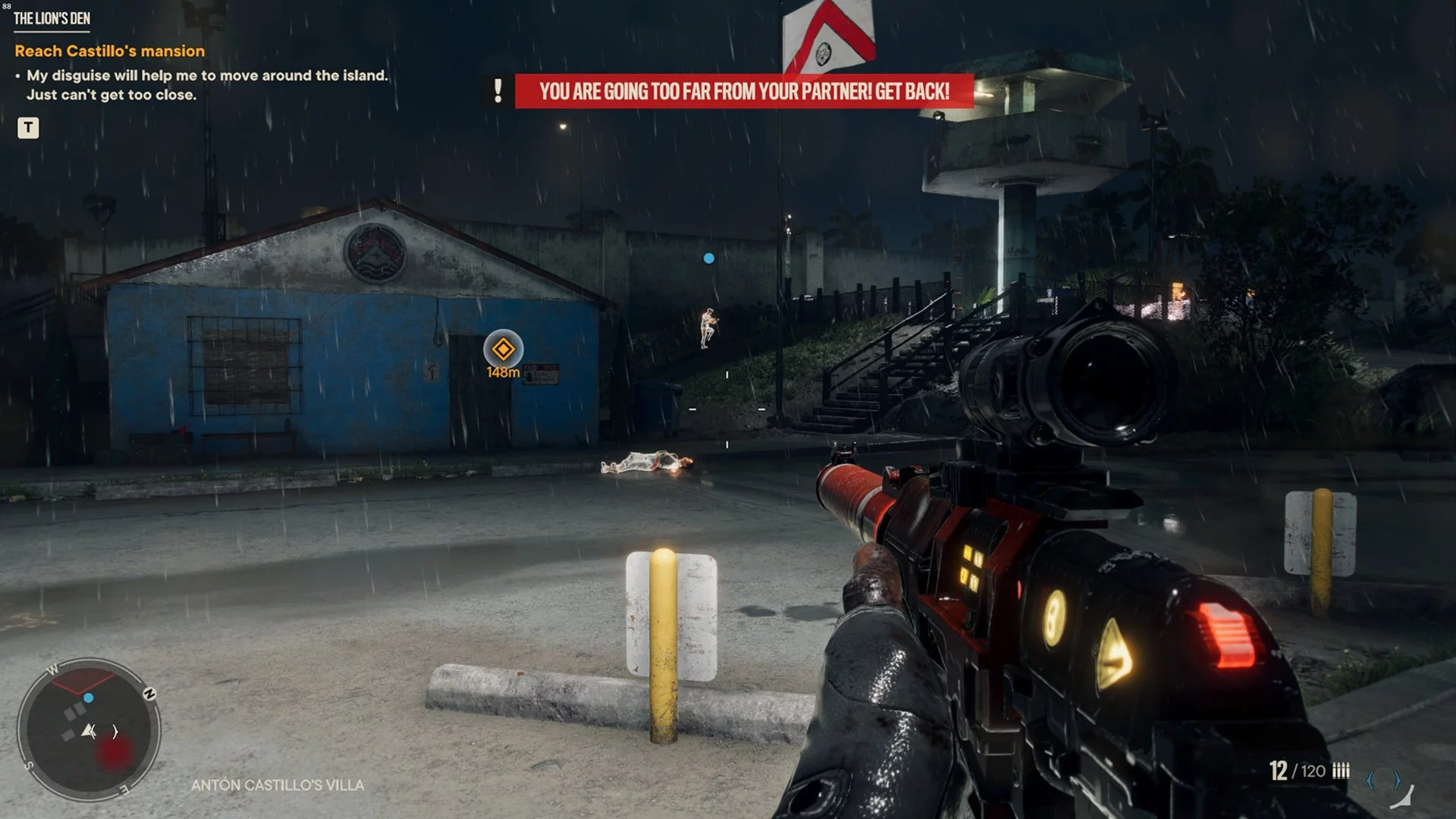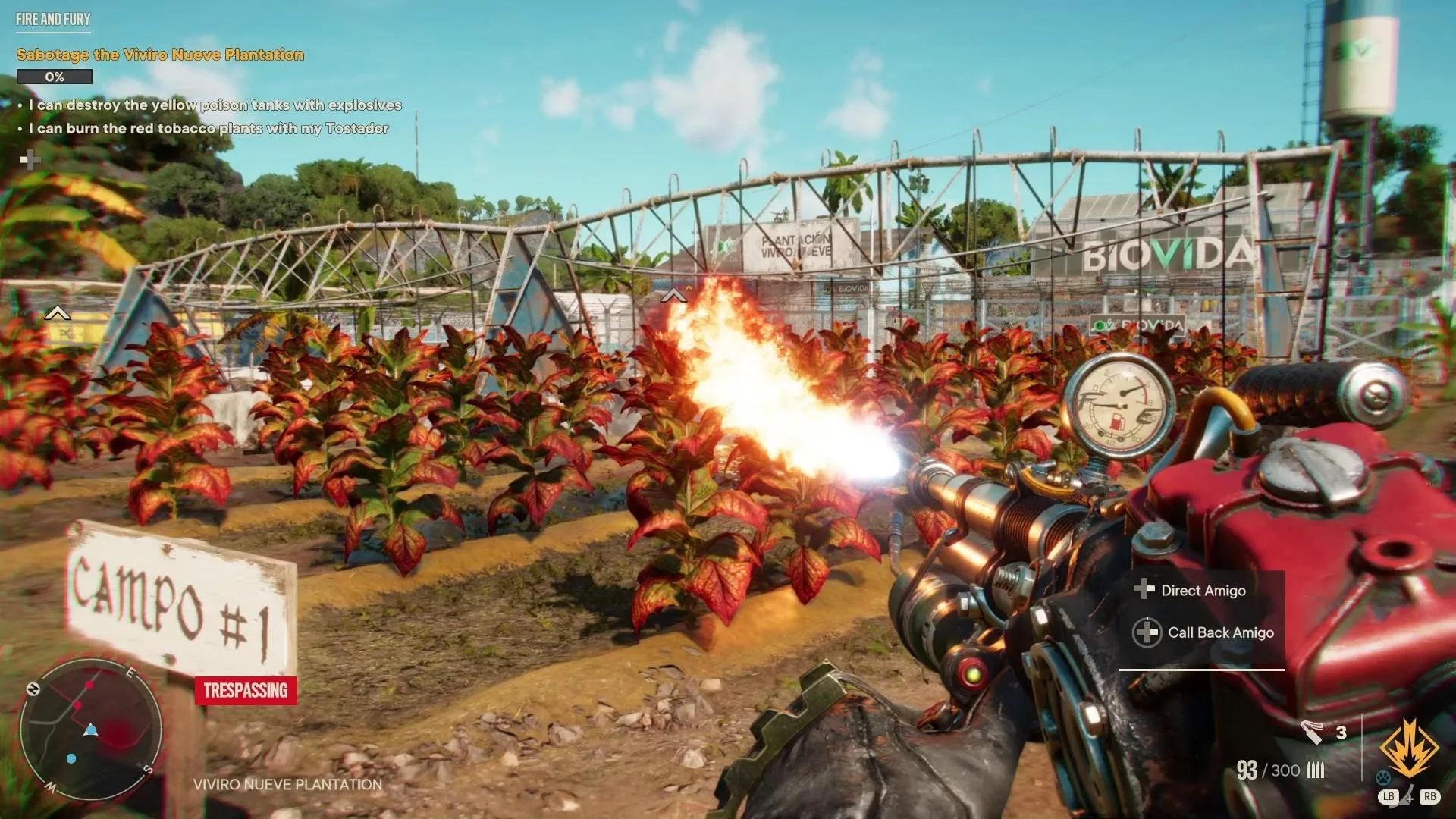Will this deviation from an established formula be Far Cry's undoing?
Stevivor staffers seem to have a very strong bond to the Far Cry series, with the last three mainline trilogy of games (Far Cry 3, Far Cry 4, and Far Cry 5) all smashing out 9s as per our rating scale. I absolutely agree that those titles are wonderful experiences; I loved exploring their fascinating worlds and interacting with interestingly twisted antagonists. Along the way though, systems have been refined and streamlined to the point where I thought Far Cry 5 was encroaching on an area that started to feel too simplified.
This might be where Ubisoft Toronto’s latest instalment to the franchise fails: by crossing that line. In Far Cry 6, everything feels too safe. There isn’t any challenge to the combat, the exploration is mindless and the story that unfolds is completely unsatisfying. Within a few hours, I was absolutely bored out of my mind, moving from mission marker to the next objective – the repetition was numbing. It was daunting to look at exactly how much of the map had been uncovered so far, and then realising that I was only a third of the way through. I had this feeling starting to set in: that I didn’t want to be playing Far Cry 6 anymore.
Following a similar premise to the previous titles, Far Cry 6 sees you taking control of Dani Rojas, a guerrilla fighter attempting to overthrow the leadership in charge of the tropical island called Yara. Antón Castillo is the country’s president, played by Giancarlo Esposito, and serves as the main antagonist. While Far Cry series has had a delightful selection of villainous figures at the forefront of their narratives, Castillo is forgettable here with his presence being minimal. When he does make an appearance, it’s completely uninteresting.
Yara is split across five sections, but each location is so similar to the other that places end up looking the same. There is no sense of discovery or exploration; you can’t stumble upon little story elements that fill out this paradise as a place that feels lived in, unlike titles like Red Dead Redemption 2 that have done it so well. Any beats meant to flesh out the world, like Yaran Stories, are merely an additional set of icons that sit alongside a host of others.
Far Cry 6‘s initial tutorial has you isolated to a smaller island for its first few hours. This sets up most of the main mechanics that you’ll come across through the course of the game. The tasks you’ll be asked to undertake include taking over military bases, clearing road checkpoints and destroying anti-air equipment. Doing these things will allow you to manoeuvrer throughout Yara with further ease.
The problem is you’ve basically seen most of what the game has to throw at you from the outset. The main activity of clearing outposts is trivial; it can be done in just a few seconds, and hardly evolves as you progress. Enemies die from a single shot to the head, and so one of the first weapons given to you is more than enough to get you through the entire story campaign without breaking a sweat. This is true even inside action mode, the more difficult of Far Cry 6‘s available two options.
As you complete tasks, you’ll earn experience that allows the character to unlock new weapons and gear. Equipment can also be found in chests while exploring the world, or completing treasure hunt missions that are spread throughout Yara. However, the skills and perks system from previous Far Cry titles has been replaced by one where perks are attached to your equipment’s loadout. You might have shoes that allow you to move quicker, gloves that reduce weapon sway or headgear that will tag nearby enemies after a takedown. In a sandbox environment this can limit how the player approaches each encounter if they have certain playstyles. In past Far Cry games, you could unlock specific perks that benefitted stealth tactics. In Far Cry 6, you’re now stumbling across specific pieces of gear in the vast span of Yara, hoping they mesh with how you want to play.
This also means that hunting takes even more of a backseat as compared to Far Cry 5; crafting items is no longer a mechanic. Instead, your harvested animal parts can be traded for components used to upgrade your weapons, or specific gear in the case of legendary animals. I found myself not interested in doing many of these hunting locations as the incentive to do so just wasn’t there.
A neat addition to your arsenal is the Supremo Backpack, which can be customised to unleash different devastating attacks on your enemies. It can be recharged by taking out multiple foes, so it’s a cool tool to have if things do heat up a little during battle. Additionally you can also find Resolver Weaponry, which are pieces of literal junk slapped together to make a Frankenstein-type weapon like a CD launcher gun that plays the 90’s hit Macarena as it shoots out compact discs. Although they sound cool in the flavour text, in practice they just more gimmicky than useful.
All of the AI companions, or Amigos, are animals you’ll unlock throughout Yara. Guapo is a pet crocodile with a golden smile that can heal and revive himself, Chorizo is an adorable dachshund that can distract his enemies with his cuteness, and Chicharron is an aggressive punk-rock rooster that kicks the shit out of everything. There are a variety of others to unlock but each one of them is very fun to use.
Aside from the lacklustre gameplay there are a bunch of just flat out weird things going on in Far Cry 6 that drive me insane. For starters, Ubisoft insists on having co-op included (which has been the case since Far Cry 3), however it’s implemented poorly and seems like a checkbox on a marketing list. While a co-op partner is able to accumulate experience and gear, their story progress STILL does not carry over to their own game.
Co-op also doesn’t allow you to venture too far away from your partner or you’ll get a warning and then one of you — roll a dice — will be teleported to the other player. This becomes problematic if you decide to do an airdrop and use your wingsuit to quickly get from one location to another. There just isn’t enough distance that allows players to use these tools without the game’s boundaries getting in the way.
On the final mission my co-op partner and I were getting warnings that we were too far from each other while we were 40 meters apart. It completely broke our endgame experience with this red bar at the top of the screen, with each of us being teleported somewhere else if we dared venture off.
One of the most interesting design choices that is completely absent from the tedious story campaign is available inside co-op missions, where one player carries a device that overheats and will eventually explode if it gets too hot. You need to keep out of the sun; moving the bomb into the shade prevents it from heating up and hitting its breaking point. You’re also able to cool it down by running to water sources spread through the area. These might be the most thought-provoking and tense series of missions in Far Cry 6; it would have been nice to see this sort of attention paid in the main campaign.
Technical glitches were few and far between, but there were so many occasions where enemies in the world would respawn next to you in areas you’ve just cleared out. I had one instance where I killed the same guy three times in the span of about a minute; each time, he was walking past a doorway, following the exact same path. It felt like a glitch in The Matrix.
Throughout my experience, there were moments where I stopped playing to take a break only to come back and realise I’d lost a bunch of progress due to the way it handles saves and checkpoints. It’s so difficult to tell when you can quit at a safe time. There were points where I clearly saw the save icon on the screen after hitting what I thought was a checkpoint, only to come back and have to start the entire mission again. There is no manual save, and when you want to exit you’re not told the last time a save was done, just that all unsaved progress will be lost — and that’s not very helpful.
I did not enjoy my time with Far Cry 6, and I couldn’t believe how quickly I lost interest with it. Not only is it disappointing because of the calibre of games that have preceded it — which I’ve had immense amount of fun with — but what it could mean for the franchise going forward if this is the direction Ubisoft continues it in. Too many of its mechanics have been streamlined to the point where they are oversimplified, and there’s a lack of innovation when it comes to ways in which to engage the player in interesting ways. I found all of the repetitive tasks you’re asked to check off a list extremely dull, and even its story couldn’t hold my attention.
The best way to play Far Cry 6 would be to fire up co-op with a friend, shoot a bunch of bad dudes, and ignore its narrative (and a lack of saved campaign progression if you’re the second player); everything else on offer isn’t captivating.
 |
|
The good
|
The bad
|
Far Cry 6 was reviewed using a promotional code on PC, as provided by the publisher. Click here to learn more about Stevivor’s scoring scale.
This article may contain affiliate links, meaning we could earn a small commission if you click-through and make a purchase. Stevivor is an independent outlet and our journalism is in no way influenced by any advertiser or commercial initiative.























